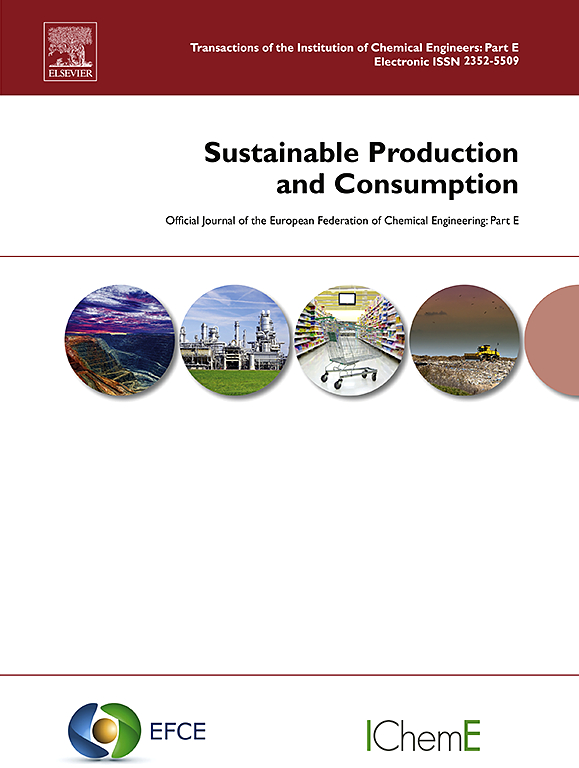从环境、经济和技术角度平衡纺织废料回收技术
IF 9.6
1区 环境科学与生态学
Q1 ENVIRONMENTAL STUDIES
引用次数: 0
摘要
纺织废料回收对于减轻纺织工业对环境的影响和节约资源至关重要。本研究旨在综合评估九种纺织废料回收技术对中国废棉、聚酯、涤棉混纺和混合纺织废料的环境、经济和技术权衡。通过整合生命周期评估、生命周期成本和VlseKriterijumska Optimizacija I Kompromisno Resenje方法,本研究提供了一个平衡冲突目标的方法论框架。结果表明,化学回收成本较高,但收益较高,而机械和物理回收具有较高的技术成熟度和材料保留率,能耗和废物产生量较低。此外,机械和物理恢复在全球变暖潜势、能源消耗、人类健康损害和资源消耗方面取得了最显著的减少。基于环境、经济和技术的权衡,认为机械回收是废棉最平衡的选择,物理回收是废聚酯更稳定的解决方案,垃圾衍生燃料(RDF)生产是混合纺织废料的最佳选择,化学回收更适合涤棉。这些发现表明,在中国,优化纺织废料回收每年可节省约2500万吨二氧化碳排放、10亿立方米淡水和2.3万吨化石燃料。重要的启示是,应建立完善的各类纺织废弃物的回收网络和物料流,并在中国建立RDF标准,规范能源设施和水泥厂的利用率,以提高混合纺织废弃物的回收。该研究将为各种回收途径之间的权衡提供新的见解,并为政策制定者和相关利益相关者设计可持续纺织废物战略提供实用指导。本文章由计算机程序翻译,如有差异,请以英文原文为准。

Balancing textile waste recovery technologies from the environmental, economic, and technological perspectives
Textile waste recovery is essential for mitigating environmental impacts and conserving resources in the textile industry. This study aims to comprehensively evaluate the environmental, economic, and technological trade-offs of nine textile waste recovery technologies for waste cotton, polyester, polyester-cotton blends, and mixed textile waste in China. By integrating life cycle assessment, life cycle costing, and the VlseKriterijumska Optimizacija I Kompromisno Resenje method, this study provides a methodology framework to balance conflicting objectives. The results showed that chemical recovery led to higher costs but made greater revenue, whereas mechanical and physical recovery demonstrated higher technological maturity and material retention, with lower energy consumption and waste generation. In addition, mechanical and physical recovery achieved the most significant reductions in global warming potential, energy consumption, human health damage, and resource consumption. Based on environmental, economic, and technological trade-offs, it is hold that mechanical recovery is the most balanced option for waste cotton, physical recovery is the more stable solution for waste polyester, refuse derived fuel (RDF) production is the optimal choice for mixed textile waste, and chemical recovery is more suitable for polyester-cotton. These findings suggest that optimizing textile waste recovery in China could annually save of approximately 25 million tons of CO₂ emissions, 1 billion cubic meters of fresh water, and 23 thousand tons of fossil fuel. The important implications are that a refined recycling network and material flow should be set up for all kinds of textile wastes, and RDF standards should be established in China and regulate the usage ratio in energy facilities and cement plants, so as to enhance mixed textile waste recovery. The study would provide novel insights into the trade-offs among various recovery pathways, and practical guidance for policymakers and related stakeholders in designing sustainable textile waste strategies.
求助全文
通过发布文献求助,成功后即可免费获取论文全文。
去求助
来源期刊

Sustainable Production and Consumption
Environmental Science-Environmental Engineering
CiteScore
17.40
自引率
7.40%
发文量
389
审稿时长
13 days
期刊介绍:
Sustainable production and consumption refers to the production and utilization of goods and services in a way that benefits society, is economically viable, and has minimal environmental impact throughout its entire lifespan. Our journal is dedicated to publishing top-notch interdisciplinary research and practical studies in this emerging field. We take a distinctive approach by examining the interplay between technology, consumption patterns, and policy to identify sustainable solutions for both production and consumption systems.
 求助内容:
求助内容: 应助结果提醒方式:
应助结果提醒方式:


